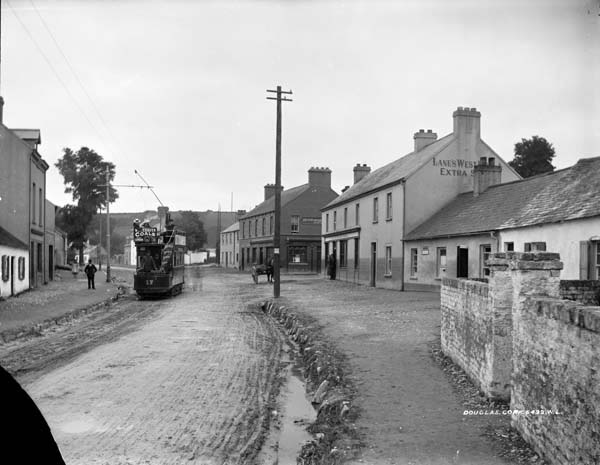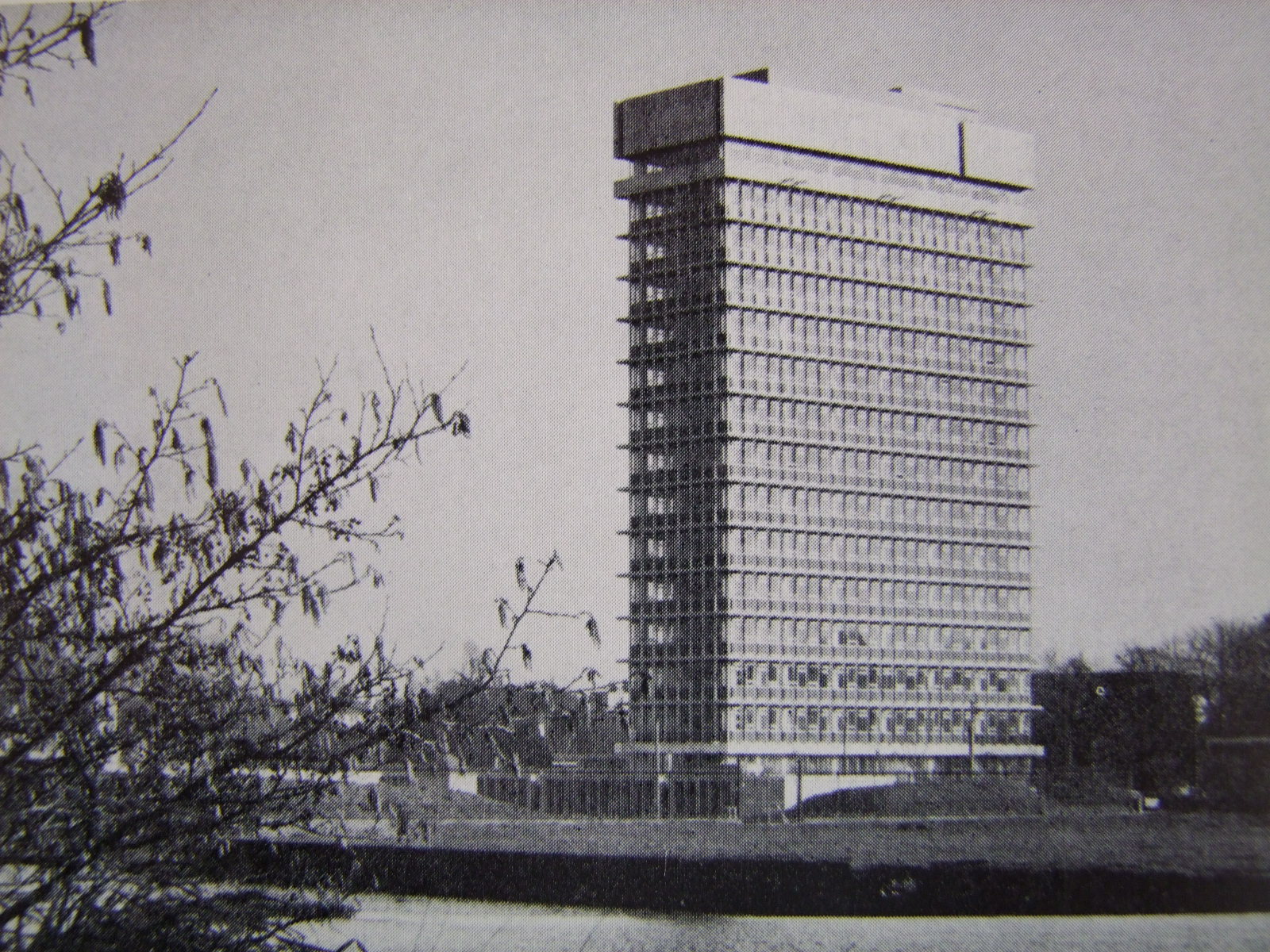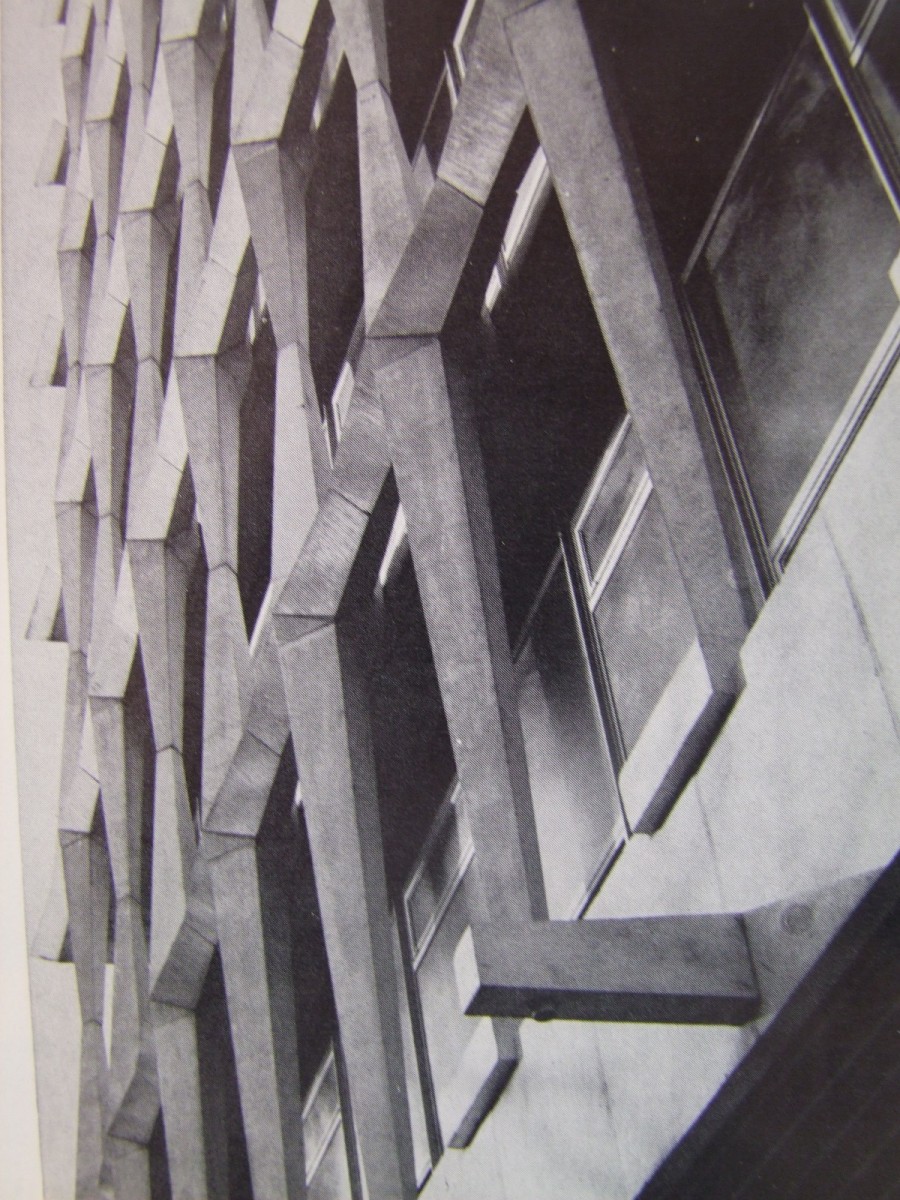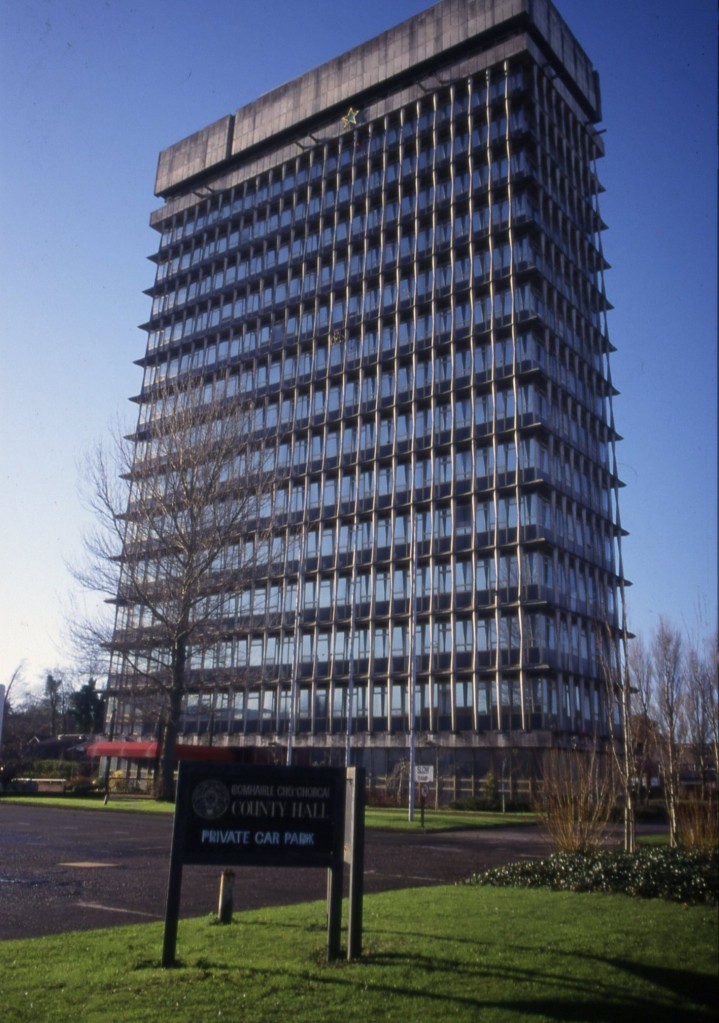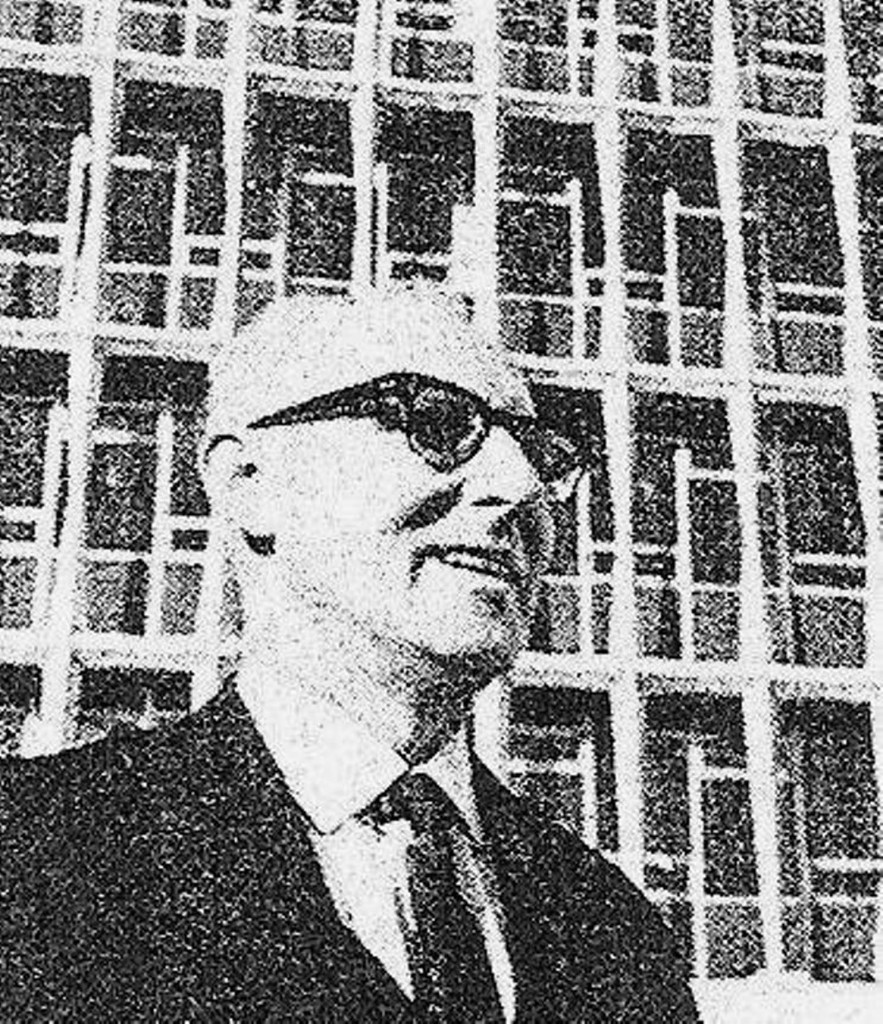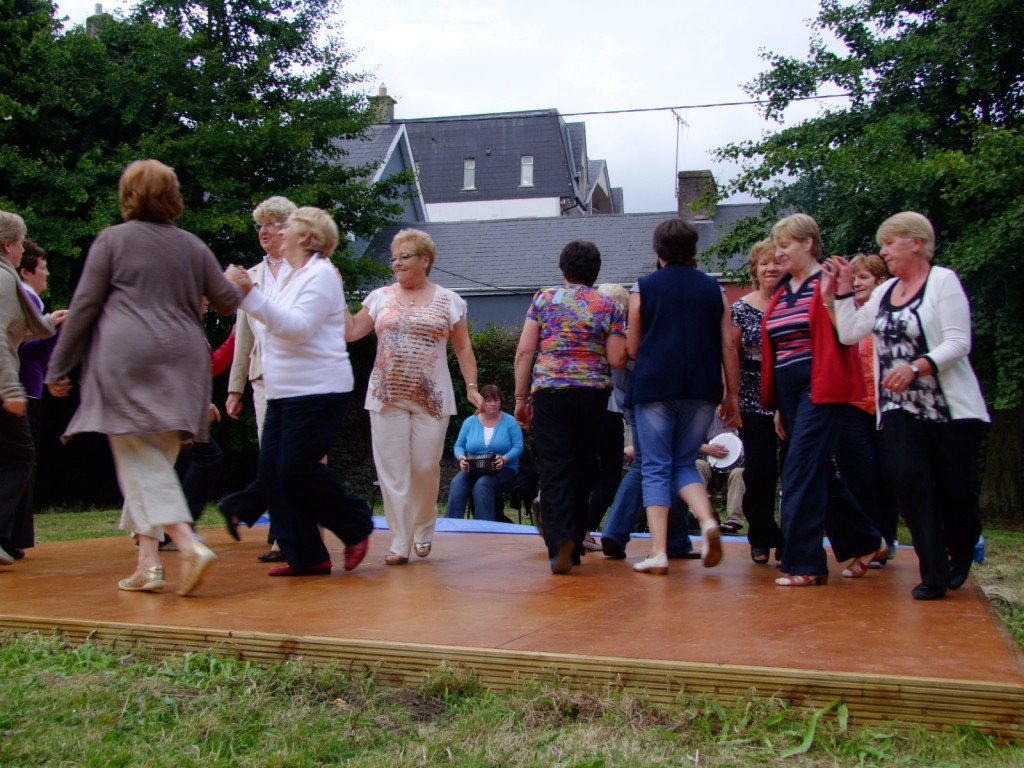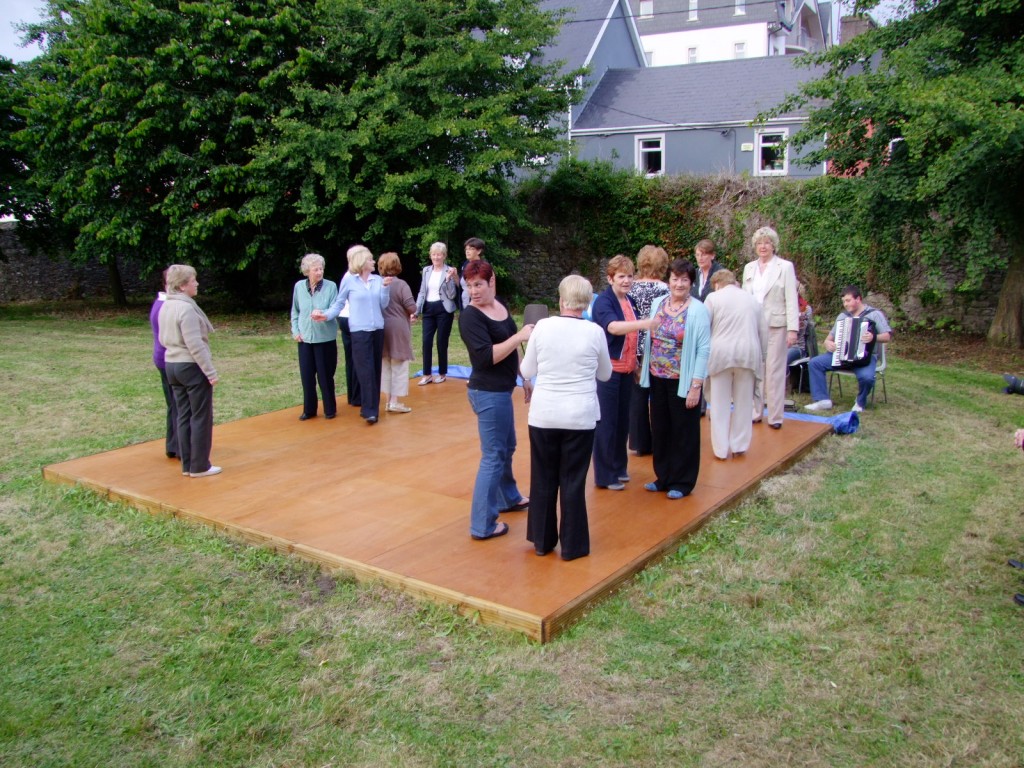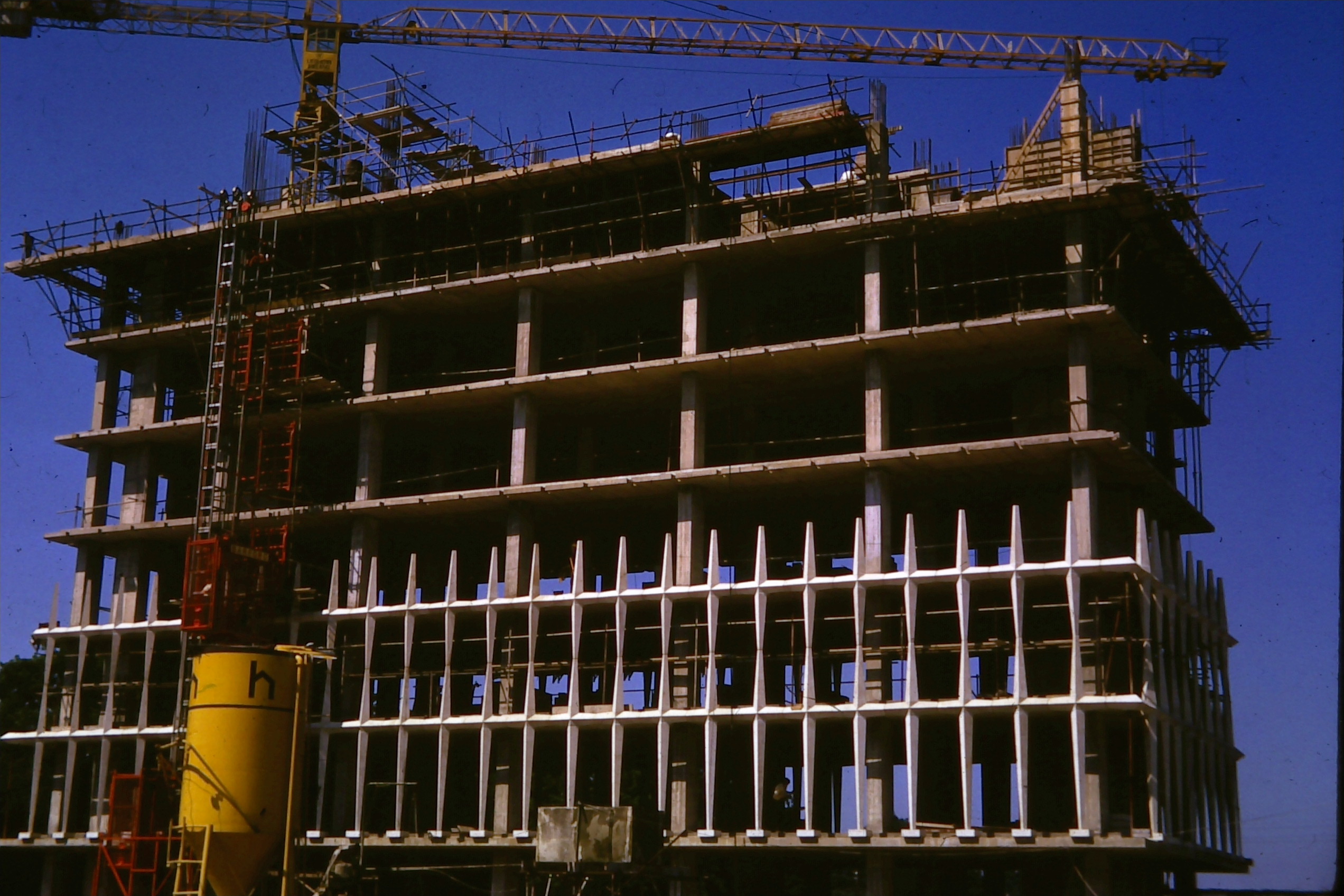
Kieran’s Our City, Our Town Article,
Cork Independent, 4 August 2011
In the Footsteps of St. Finbarre (Part 266)
Speech Notes at a Skyscraper
“On many building sites in many parts of the world, Irish craftsmen have shown their skill and have proved their worth on the construction of large and complicated buildings. The County Hall offered those of us who are privileged to remain in our country an opportunity and a challenge to create for our own people a contemporary building of some dignity and a worthy centre of county administration.” (extract from architect Patrick L. McSweeney’s speech at the opening of Cork County Hall, 16 April 1968).
Paul McSweeney, son of the architect, Patrick McSweeney of Cork County Hall was in contact to flesh out some of the narrative on his father’s work. He outlined that his father was born in late 1918, a native of Ballydehob. “My father came into architecture by an odd combination of circumstances, hard work and luck. His formal education pretty much finished in Ballydehob at the end of primary, but in 1941 (aged about 20), he joined the naval service and got into the drawing office in the naval dockyard in Haulbowline where he trained as a draftsman and took evening classes in the Crawford Tech. He qualified as a naval architect and left the navy in 1946 as a Chief Petty Officer (I think senior sergeant), then trained in civil architecture with O’Flynn & Green’s before qualifying with the RIBA in London in 1948.
He worked briefly with Cork County Council before moving briefly to Carlow County Council and then returned as Cork County Architect in the early 1950s. He was in this role (and also in charge of planning in Cork county) until he took early retirement in 1975. Thereafter until he died in 1994, he had a small practice of his own; he never actually retired. He had an interest in sculpture all his life and was involved in the committee that selected pieces for Fitzgerald’s Park (he also knew Seamus Murphy reasonably well). His main buildings of note are Bantry Library (I think it was his favourite), the County Hall and Frankfield church in addition to a number of banks built (e.g., Bishopstown) or renovated for the then TSB. He was also involved in renovating a number of churches in latter years.”
The County Library’s draft schedule and plan of operation gives further perspectives on the building. On the day of the opening, 16 April 1968, members of Cork County Council held their last meeting at Cork City Courthouse on Washington Street starting at 11am. At 11.20 they adjourned their meeting and moved to the Carrigrohane Straight Road. The Minister of Local Government Kevin Boland arrived at noon and at 12.15 the Chairman of Cork County Council Cllr. Martin Corry officially turned the key of the front door of County Hall and opened the building. Speaking at the event, Cllr Corry articulated: “the erection of a building like this has been the concern of every County Council for last seventy years…we feel certain that this County Hall will enable us to provide a more efficient service for the people of Cork County”.
Heading to the Council Chamber, the selected guests and councillors listened to Cllr. Corry again noting his deep satisfaction with the new building. There Minister Boland replied. Born in Dublin in 1917, Kevin Boland was the son of Gerald Boland, a founder-member of Fianna Fáil and the nephew of Harry Boland. He noted that “Cork’s new County Hall is a credit to all concerned and must inspire confidence in the future of Cork County. It will indeed be a just cause for civic pride for many years to come”.
By 2pm, the guests had moved to luncheon in the Imperial Hotel on the South Mall. Here the Lord Mayor of Cork, Alderman Pearse Wyse T.D. was given the opportunity to speak; “This magnificent building projects the image of modern Ireland and certainly proves beyond all doubt, the ability of our builders and craftsmen to meet the challenge of modern architecture and construction. One usually associates a project such as the present County Hall with development now taking place in Irish industry and commerce…I am sure that members of both councils realise the importance of continuing co-operation and good will in the challenging years ahead so as to ensure that we avail of all possible opportunities that may arise especially in the field of industry, which will be of benefit to city and county people.”
In a similar vein to the Lord Mayor, the County Manager replied and commented about the City and County Council’s relationship; “My lord Mayor, the new Cork County Hall may be in Cork City by accident, but I want to assure you that you yourself are here today by design. We are happy that the people of Cork City represented by you are celebrating this happy occasion with us because we believe that developments in the City and County of Cork are intermingled and interdependent and our hopes are for further and rapid economic development of both areas together. Our recent participation in the Cork Economical Development Council is tangible evidence or our desire to ignore artificial boundaries when the economic advancement of the entire Cork area is at stake.”
To be continued…
Captions:
602a. Construction photograph of Cork County Hall, c.1967 (source: McSweeney family)
602b. Construction photograph of Cork County Hall, near completion (source: McSweeney family)





